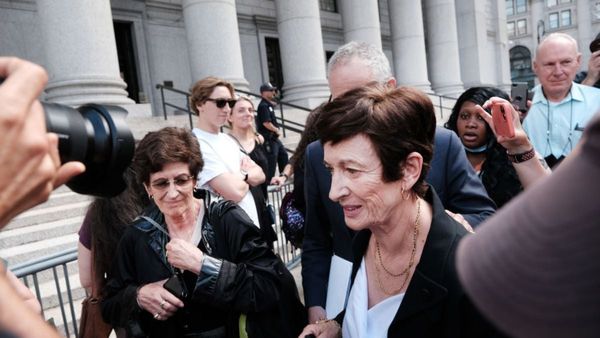

If you’ve been scrolling through your FYP lately, you’ve probably noticed the chatter about Pretty Little Thing’s dramatic shift from club-ready fits to something that looks like it was ripped straight out of Sophia Richie‘s ‘quiet luxury‘ Pinterest board.
Gone are the days of neon crop tops and booty shorts. PLT’s new vibe? Think less ‘hot girl summer‘ and more ‘I summer in the Hamptons’. The brand has swapped its signature pink for a sea of neutrals, trading bodycon dresses for blazers and pantsuits. It’s giving ‘old money’ aesthetic, minus the actual old money or quality.

While PLT claims this rebrand is all about “elevated fashion essentials”, many are calling BS. As TikToker Zara (@whazaraloves6) points out, “Quiet luxury is the investment in high quality, timeless pieces that are sustainably made and not meant to be consumed in a fast fashion etiquette.”
She adds, “Just using a more muted colour palette to not make your clothes more timeless if they’re made from the same quality.”
The rebrand has sparked a heated debate online, with many questioning the motives behind this sudden shift. Is it just a cynical attempt to cash in on current trends, or does it reflect a deeper, more concerning societal shift?
TikToker Sinit (@asinderellastory) sees it as part of a larger pattern: “The Pretty Little Thing rebrand, the rise of soft girl feminine dating advice and dating coaches, the resurgence of trad wife ideals and content… They all join together to show the growing embrace of conservatism, but repackaged and highly aestheticised for the digital age.”
It’s not just about the clothes either. The models showcasing PLT’s new look are predominantly thin, white women with ‘clean girl’ makeup and soft updos. As Mary (@marymandefield) points out on TikTok, “Where does that leave black and brown women, which you used so much when you first were advertising your brand, which is all about the BBL aesthetic and the curves and looking street?”

This shift towards a more ‘conservative’ aesthetic coincides with some pretty worrying trends in the real world. As @thecolrgirl notes, “Conservative fashion met with economy and stability. That automatically means more office wear, more greys.”
She adds, “The party girl era is over, and once again, we can trail that back to conservative fashion. We can trail that back to the economy being unstable.”
This trend towards ‘old money’ aesthetics isn’t just about fashion – it’s about class and race too. The ‘old money’ look is rooted in white, generational wealth. It’s an aesthetic that, intentionally or not, excludes those who’ve historically been shut out of accumulating that kind of wealth.
It’s hard not to see the irony that brands like Pretty Little Thing or Djerf Avenue are embracing this aesthetic while maintaining poor ethics and quality, essentially profiting from the same exploitative systems that built the wealth of ‘old money’ families.
The rise of conservative politics is no coincidence either. The 2024 US presidential election saw a shift towards traditional values and conservative ideals, which have been mirrored in the fashion world.
Influencers like Nara Smith have gained popularity by embodying this conservative ideal. Smith, a married Mormon, presents a curated mix of modest fashion and modern feminism, often showcasing traditional domestic skills like cooking from scratch while dressed in couture. This juxtaposition of high fashion with traditional roles raises questions about how fashion can make conservative values appear aspirational.

Hannah Neeleman (aka Ballerina Farm) is another figure who has become an icon of traditional values and gender roles. Unlike Smith, Neeleman’s content is more overtly conservative, showcasing a rural lifestyle that aligns with traditional gender roles without the veneer of high fashion. The question remains: does fashion allow us to mask problematic ideologies by dressing them up in appealing aesthetics?
So, what’s the deal? Are we all just tired of the hustle and longing for a simpler time? Or is this a sign of something more sinister – a creeping return to conservative values dressed up in beige and marketed as aspirational?

As Sinit puts it, “As social and economic instability rises, traditionalism is being marketed and pushed as a form of security, whether it’s like those cottage core influences or those stay at home wives and girlfriends.”
Look, there’s nothing wrong with wanting an easier life or liking beige (you do you). But when brands start pushing an aesthetic that’s rooted in exclusivity and traditional gender roles, it’s worth asking some questions.
So the next time you’re scrolling through PLT’s new ‘elevated’ collection, maybe pause and think: Is this really progress, or are we just making conservatism look cute? Because in 2025, it’s becoming increasingly clear that fashion isn’t just about clothes – it’s a reflection of our politics, our values, and the direction our society is heading. And right now, that direction seems to be taking a sharp turn towards the right, wrapped up in a pretty beige bow.
Lead image: Pretty Little Thing / TikTok
The post Why Pretty Little Thing’s Rebrand From Clubwear To Conservative Has TikTok Reeling appeared first on PEDESTRIAN.TV .







